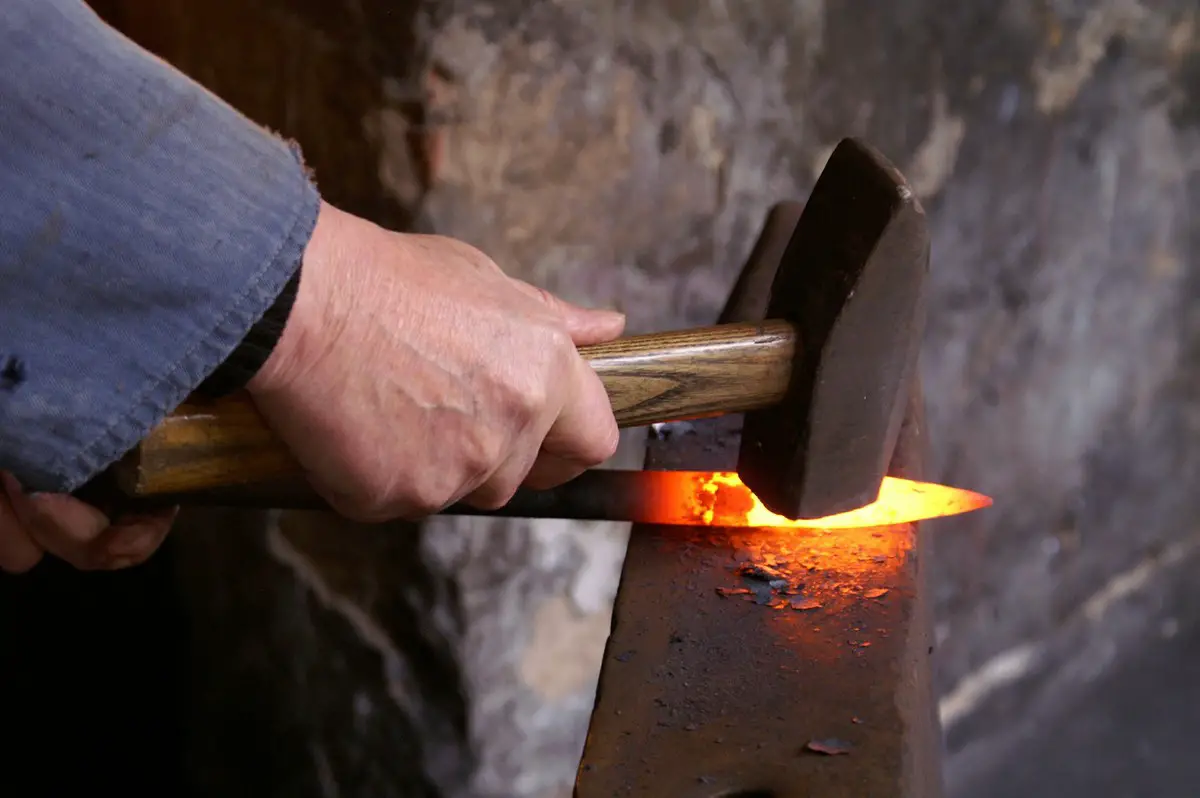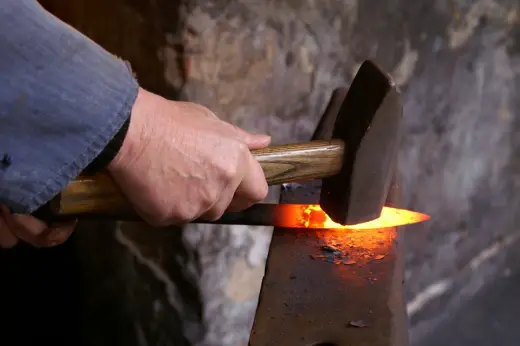Pros and cons of closed die forging guide, Closed die hammer forge metal parts and products advice
Pros and Cons of Closed Die Forging
29 Sep 2021
Forging metal parts and products can be done in a variety of different ways.
Closed die hammer forging (also known as impression forging) is one of the most popular methods of forging and accounts for a large portion of the forging industry’s day-to-day work.
Compared to other methods, closed die forging has some unique strengths and drawbacks.
Here’s what you need to know:
Closed die forging: how it’s done
Closed die forging is a method of forging that involves heated metal that is hammered or pressed into a mould or die. Unlike open die forging, where it uses dies to leave the metal open, closed die forging encases the metal, allowing for more precise forged shapes. It uses a grade of metal that is heated, sometimes upwards of 1500˚C, and is then hammered to fill out the mould, creating a near-net shape. The metal product is then usually heat-treated, hot-dip galvanised, or machined down to the correct size and dimensions.
The closed die forging process all starts with the design and 3-dimensional modelling. Moulds are created so when the metal is forced into them it assumes the desired shape.
These days, technologies such as Computer-aided design (CAD) allow forging companies to develop samples for testing to ensure the integrity and accuracy of the final product. A test run is always carried out before a large product run is set up.
Pros of closed die forging
Closed die forging is a unique method that boasts a variety of benefits and is chosen over other methods because of the following:
- Improved strength
The closed die forging process refines the inner grain of the metal, improving its mechanical properties and heavy industrial applications where safety, durability, and strength are important factors.
- Multiple materials can be used
Depending on the manufacturer’s forgings manufacturing capability, a range of materials can be forged into a range of geometric shapes and sizes. These can include alloy, carbon, and stainless steel, as well as aluminium and brass.
- Tight tolerances
Closed die forging is highly accurate as it presses the workpiece into the die which usually allows for a tolerance of +/- 0.5mm. This controlled method of forging creates near-finished products and components on a large scale.
- Cheaper for high-volume projects
While the initial cost of producing the die is quite high – large-scale projects with a high number of like-for-like parts can result in a reduced cost per component. As such, this is the most cost-effective solution for larger production runs.
- Improved surface finish
After forging the metal workpiece has a smoother finish compared to other forging methods. This is because the metal is pressed into a precise mould that is designed to deliver an almost perfect result that requires minimal machining.
Cons of closed die forging
For certain products and parts, closed die forging does have its drawbacks.
- Size limitations
Closed die forging uses a mould that has to be much larger than the actual product to hold it in place while it’s being hammered into shape. Therefore, the equipment and setup for closed die forging makes it harder to forge larger components.
- Smaller projects can get expensive
Due to the high tooling cost, smaller and unique (also known as investment forgings) will end up being more expensive than other methods.
- Irregular shapes are difficult to produce
Forging an irregular or highly intricate shape can get costly. These shapes often require more design and engineering work to get the project underway. For these projects, other methods such as casting should be considered.
How does it compare to other methods?
Closed die forgings are naturally very different from other methods. Depending on the product, its function, and any relevant safety, strength, and durability requirements, other methods may be more effective at achieving the desired result.
Processes such as open die forging, casting, hot/cold bending, and threading are all useful in their own ways to create specific components on demand.
Compared to open die forging, where the metal is not constrained by the die, open die forging is better for larger pieces and has minimal (if any) tooling costs.
Cast forging methods, on the other hand, represent a different approach. Metal is melted down to a liquid and poured into a mould to create a variety of shapes. The advantage here is the variety of shapes that can be produced. However, closed die forging produces stronger, more durable components.
Get your parts designed, forged and delivered by the experts.
On the search for the ultimate forgings manufacturing capability? Australia is teeming with high-quality forgings manufacturers with enormous industry expertise and technical know-how. With teams of designers, developers, and engineers, your solution for custom and large-scale forgings may be just around the corner.
Get your project underway with an Australian-owned and operated firm with industry experience, expert engineers, and quality assurance.
Get in touch with your local forgings specialist today.
Comments on this guide to pros and cons of closed die forging article are welcome.
Glasgow Building Designs
Glasgow Architecture Designs – architectural selection below:
New Glasgow Architectural Photos
Glasgow Architectural Photos
Holiday Inn Pacific Quay Hotel
Architects: Mosaic Architecture + Design

image courtesy of architects
Holiday Inn Pacific Quay Hotel
Merchant City boutique hotel

image courtesy of architecture practice
Merchant City Property
Comments on this guide to pros and cons of closed die forging advice article are welcome

